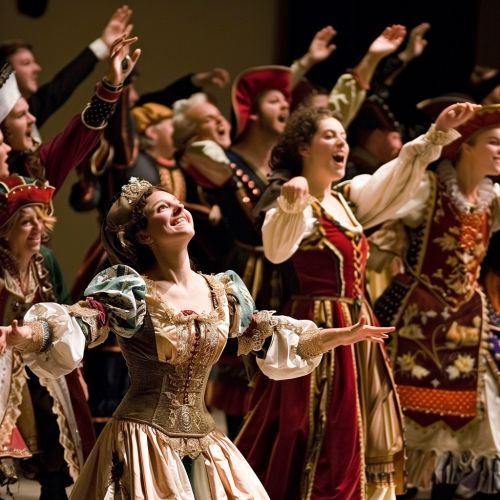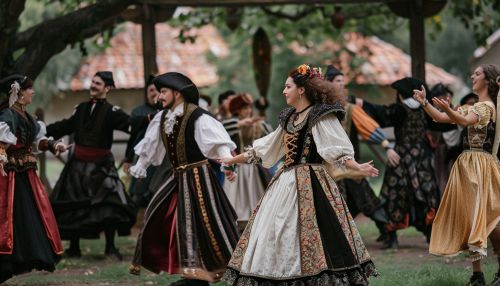Allemande
History
The allemande is a type of dance that originated in the 16th century. It is believed to have originated in Germany, hence the name "allemande", which means "German" in French. The dance was popular in Renaissance Europe, particularly in France and England, and was often used as the opening dance in a suite of dances. Learn more about Renaissance Dance.


The allemande was typically performed in a moderate to fast tempo and was characterized by its intricate footwork and the use of a specific type of turn called the "allemande turn". The dance was usually performed by couples in a line or in a circle, and involved a series of steps and turns that were performed in time with the music. Explore different types of Dance Steps.
Musical Form
In music, the allemande is a type of binary form that was commonly used in the Baroque period. It is characterized by its moderate tempo, 4/4 time signature, and its use of short, often syncopated, rhythmic patterns. The music of the allemande often features a distinctive rhythm known as the "allemande rhythm", which consists of a quarter note followed by an eighth note, followed by two sixteenth notes. Discover more about Baroque Music.
Influence on Other Dances
The allemande had a significant influence on the development of other dances. For example, the courante, a dance that was popular in France in the 17th century, was directly influenced by the allemande. The courante was typically performed immediately after the allemande in a suite of dances, and shared many of the same characteristics, including the use of intricate footwork and the allemande turn. Read more about Courante.
The allemande also had a significant influence on the development of the English country dance. The English country dance, which was popular in England in the 17th and 18th centuries, incorporated many of the steps and turns of the allemande, and was often performed to music that was similar in style to the music of the allemande. Learn more about English Country Dance.
Modern Interpretations
In the modern era, the allemande has been interpreted and adapted in a variety of ways. For example, in the world of competitive ballroom dance, the allemande is often used as a type of turn that is performed in a variety of dances, including the waltz and the foxtrot. Explore more about Ballroom Dance.
In the world of folk dance, the allemande is often used as a type of figure that is performed in a variety of dances. The allemande figure is typically performed by two dancers who join hands and turn around each other in a circle. Discover more about Folk Dance.
